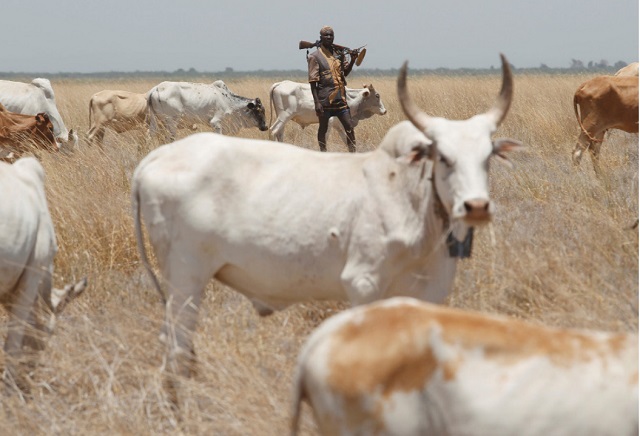
COMMENT | HUSSEIN TADICHA WARIO | Pastoral communities live off the land. In northern Kenya, where I grew up, we raised local breeds of cattle, which grazed in the dry rangelands. But our land is more than the basis of our livelihoods; it also underpins our culture and identity. As the local maxim goes, “This is where our umbilical cords are buried.” If that cord is cut – if our communities are severed from the land – tradition tells us that we cannot survive.
Kenyan institutions, from school to government, take a different view. Schools teach that pastoralists live on barren and unproductive wasteland, and that our approach to livestock-rearing is archaic and environmentally destructive. Official policies aim to force pastoral communities to abandon their mobile livestock production system, in favor of more “advanced” or “modern” agricultural systems, such as cropping, which, according to conventional wisdom, is more productive and sustainable.
It was not until I was engaged in postgraduate studies that I encountered credible evidence to the contrary. It turned out that my community in northern Kenya had been right all along: pastoralists’ livestock-husbandry practices are well adapted to dryland conditions, and pastoralism is a viable land-use option that can make sustainable use of dispersed resources.
Unfortunately, I also learned that the prejudice against pastoral systems is pervasive. And the deeply flawed logic underlying this prejudice continues to influence land-use decisions, including the decision to allow rangelands to be appropriated for green-energy projects.
It is easy to see why green-energy producers have set their sights on rangelands, which they misleadingly label “wastelands.” Because rangelands are fairly flat and tend to experience high solar irradiation and strong winds, they are ideal sites for cheap – and lucrative – solar and wind power projects.
It helps that rangelands are sparsely populated. Although local residents often resist the development of solar and wind farms, pastoral communities have less capacity to challenge the authorities than wealthier and more numerous urban dwellers do.
Pastoralists’ power to defend their interests is diminished further by their frequent exclusion from relevant decision-making processes. In Kenya, India, Morocco, and Norway, large-scale green-energy projects have been implemented on lands used by pastoralists, without adequate consultation with these groups and with limited regard for the principle of free, prior, and informed consent (FPIC) established in global human-rights agreements.
According to the FPIC principles, indigenous and pastoral communities have the right to give or withhold permission for a project that may affect them or their territories. But traditional pastoralists usually lack legally recognized titles to their common grazing land, which is supposedly held by the state “in trust” for its citizens.
But states often choose not to honor traditional land rights, even if it means violating international agreements. So, where solar farms are built, pastoralists lose access to pasture. Wind farms interfere less with grazing, but are often viewed by pastoral communities as violations of their land and cultural rights. In fact, as my colleague Ann Waters-Bayer and I show in a recent study, green-energy projects have led to land and energy dispossession, interference in livestock migration routes, disruption of pastoral cultures, and decreased resilience of the pastoral land-use system.
Pastoral communities have tried to resist – sometimes violently, sometimes through the courts. In two cases – one in Kenya, and the other in Norway – courts ruled that the land-acquisition process had been illegal. But, in both cases, the wind turbines are still spinning, highlighting the uphill battle pastoralists must fight to protect their lands, cultures, and livelihoods.
There are better models for managing the lands on which pastoralists rely. In Mongolia, effective consultations with local communities mean that local concerns about the siting of solar farms have been taken into account during project design, with herders retaining full access to the pasture under wind turbines and power lines. Pastoral systems were thus not disrupted at all. In Canada, Kenya, and Mexico, there are green-energy projects that benefit local communities through revenue-sharing.
Such models cannot be adopted too soon, because the world is facing a likely boom in “green-grabbing” for energy expansion. The war in Ukraine has contributed to a spike in global energy prices and sent several European countries scrambling for alternatives to Russian oil and gas. Together with pressure to make progress toward achieving net-zero emissions, the incentive to expand green-energy production is stronger than ever. The “wastelands” of the sunny, windswept dry tropics and subtropics have never been so commercially enticing.
Obviously, expansion of green energy is vital. Green-energy projects can even improve animal welfare, such as by providing shade. The issue comes down to design: developers should embrace multifunctional land-use approaches that integrate crop farming, livestock, biodiversity protection, rural social and economic activities, and energy production.
The only way to achieve this is through a transparent, inclusive, and participatory process in which pastoral communities play a central role. Stronger enforcement of human-rights principles like FPIC and more robust legal systems for recognizing rights to common land must also be essential components of green-energy projects.
Failing that, a growing number of pastoralists will lose their land to Big Renewables, resulting in increased poverty, migration, hopelessness, and conflict. This would be the height of climate injustice.
******
 Hussein Tadicha Wario is Executive Director of the Center for Research and Development in Drylands in Marsabit, Kenya.
Hussein Tadicha Wario is Executive Director of the Center for Research and Development in Drylands in Marsabit, Kenya.
Copyright: Project Syndicate, 2022.
www.project-syndicate.org
 The Independent Uganda: You get the Truth we Pay the Price
The Independent Uganda: You get the Truth we Pay the Price


